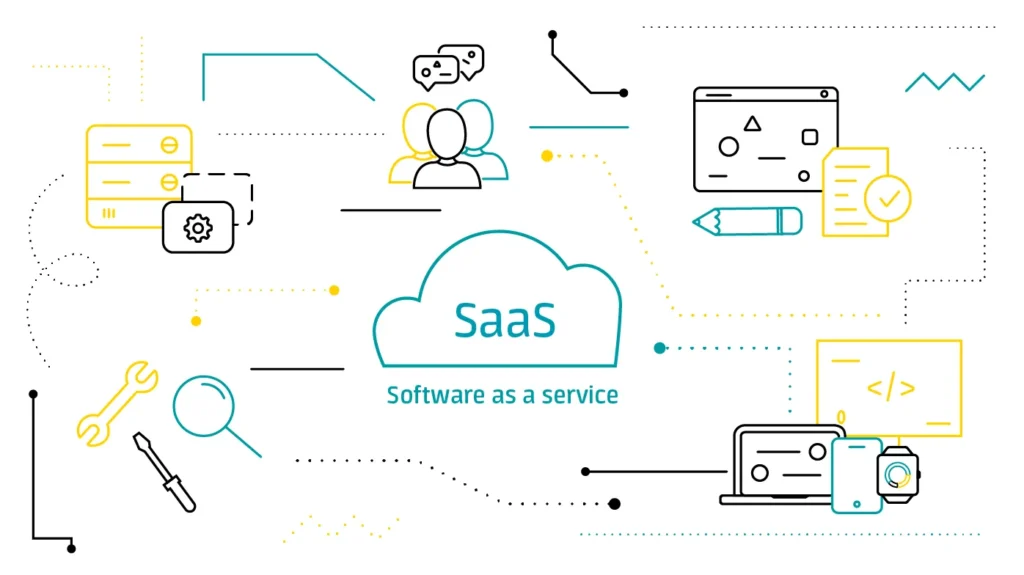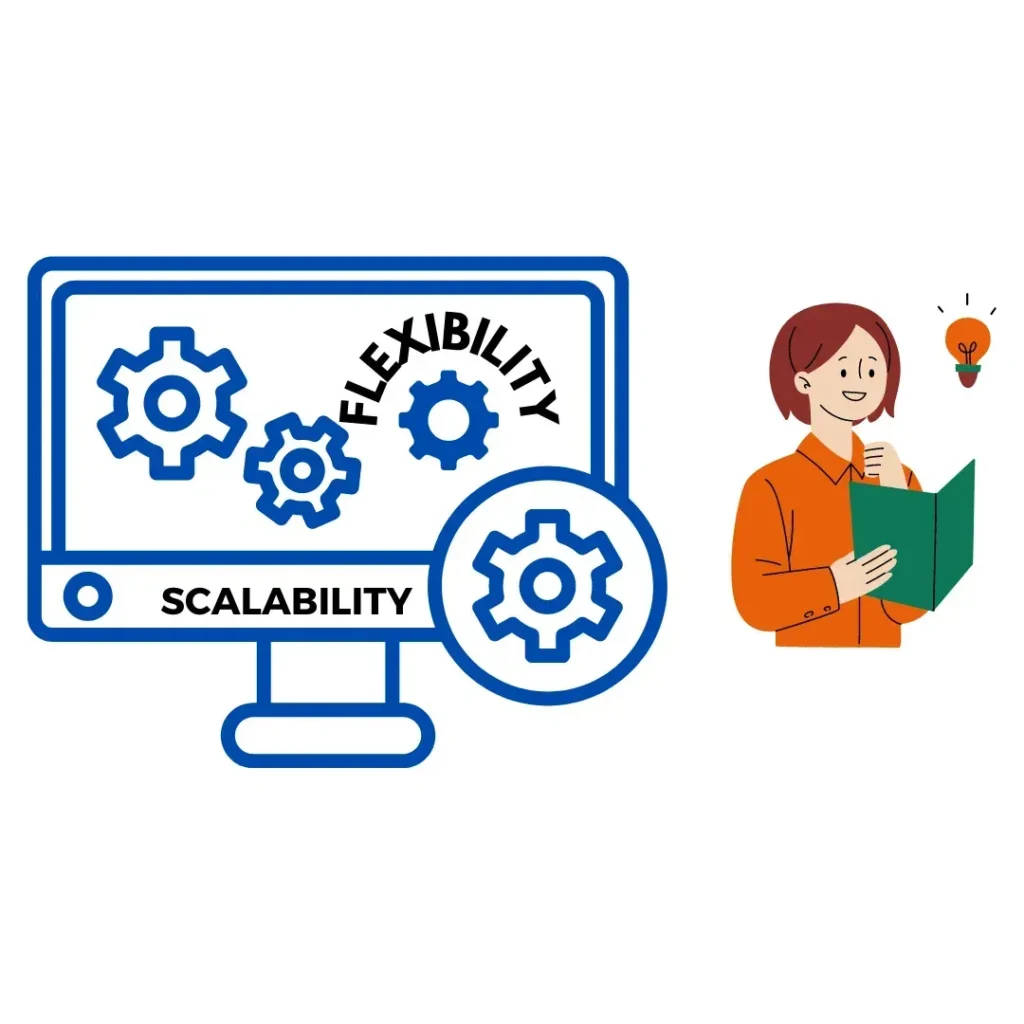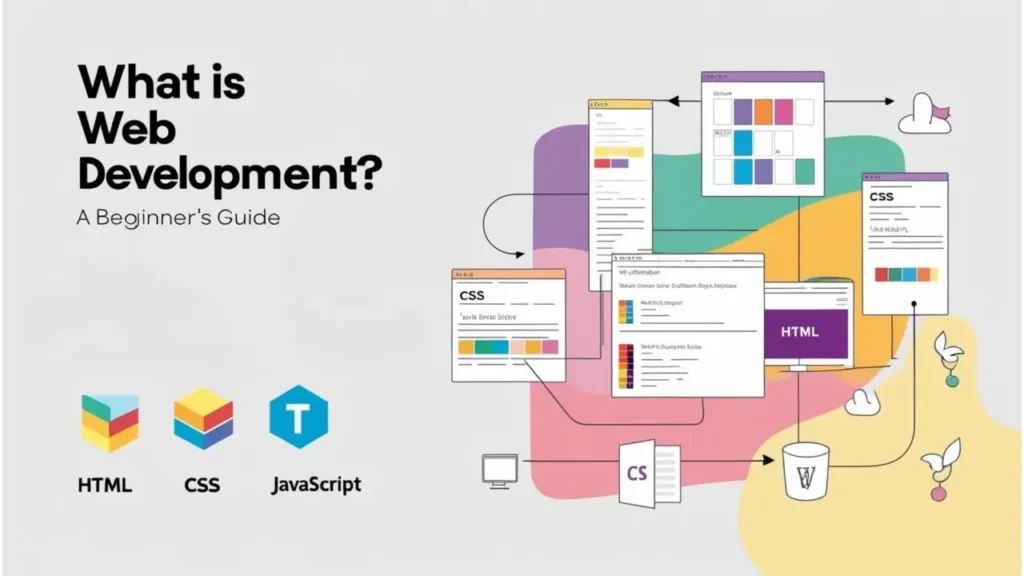In an era defined by rapid technological advancement, Software as a Service (SaaS) has emerged as a game-changer across industries. As businesses increasingly prioritize efficiency and flexibility, SaaS solutions are at the forefront of this transformation. This blog delves into the myriad ways in which Software as a Service (SaaS) is reshaping business operations, enhancing productivity, and driving innovation.
Key Takeaways
- Definition and Model of Software as a Service (SaaS)
- Enhancing Operational Efficiency
- Scalability and Flexibility
- Cost-Effectiveness
- Enhanced Security
- Driving Innovation
- Integration and Interoperability
- Industry Transformations
Table of Contents
Understanding Software as a Service (SaaS)
Software as a Service (SaaS) refers to a cloud-based service model where software applications are delivered over the internet. Unlike traditional software installations, which require significant hardware and IT resources, SaaS allows users to access applications via web browsers, eliminating the need for extensive infrastructure. This model has gained immense popularity due to its scalability, cost-effectiveness, and ease of use.
SaaS applications cover a broad spectrum, including customer relationship management (CRM), project management, human resources, accounting, and more. Leading Software as a Service (SaaS) providers such as Salesforce, HubSpot, and Microsoft 365 offer comprehensive solutions that help organizations streamline their operations, enhance collaboration, and improve customer engagement.

Enhancing Operational Efficiency
One of the most significant advantages of Software as a Service (SaaS) solutions is their ability to enhance operational efficiency. By automating routine tasks, businesses can reduce manual errors and free up employee time for more strategic activities. For instance, tools like Zapier allow users to automate workflows between different SaaS applications, streamlining processes that would typically require manual intervention.
Increased Productivity
According to a report by McKinsey, companies that adopt cloud-based solutions like SaaS experience a productivity boost of up to 25%【7†source】. This increased efficiency is primarily due to the time saved on administrative tasks, allowing employees to focus on core business functions. SaaS platforms often come with built-in analytics that provide insights into performance metrics, helping teams make informed decisions quickly.
Real-time Collaboration and Communication
SaaS solutions are designed to promote real-time collaboration, which is essential for modern business operations. Platforms like Slack and Microsoft Teams enable seamless communication among team members, regardless of their physical location. This capability is particularly beneficial for remote and hybrid work environments, where teams need to stay connected and coordinated.
Moreover, SaaS applications often incorporate project management features that facilitate task assignment, progress tracking, and deadline management. Tools like Asana and Trello empower teams to collaborate effectively, ensuring that projects stay on track and deadlines are met.
Scalability and Flexibility
The scalability of Software as a Service (SaaS) solutions is another compelling reason for their widespread adoption. Businesses can easily adjust their usage based on fluctuating demands, adding or removing users as needed. This flexibility is particularly valuable for startups and small businesses, which may not have the resources to invest in extensive IT infrastructure.
For example, an e-commerce company may experience significant growth during peak seasons. With SaaS applications, they can quickly scale their operations by adding additional user licenses or integrating new features to accommodate increased traffic and sales【8†source】. This level of adaptability allows businesses to remain agile in a constantly changing market.

Adapting to Market Changes
In today’s fast-paced business environment, the ability to quickly adapt to market changes is crucial. SaaS solutions enable businesses to deploy updates and new features without extensive downtime or disruption. This ensures that companies can respond swiftly to customer needs and industry trends, maintaining their competitive edge.
For instance, during the COVID-19 pandemic, many businesses had to pivot their operations rapidly. Software as a Service (SaaS) tools allowed them to transition to remote work seamlessly, ensuring continuity of operations and collaboration among team members【9†source】. The ability to scale up or down as needed has proven invaluable during such unpredictable times.
Cost-Effectiveness
SaaS solutions are often more cost-effective than traditional software models. With SaaS, businesses typically operate on a subscription-based model, paying only for the services they use. This eliminates the need for large upfront investments in software licenses and hardware infrastructure.
Lower Total Cost of Ownership
Additionally, Software as a Service (SaaS) providers handle maintenance, updates, and security, reducing the burden on internal IT teams. According to a study by Forrester, organizations that switch to SaaS can achieve a 30-40% reduction in total cost of ownership (TCO) compared to on-premises software【9†source】. This financial benefit makes SaaS an attractive option for companies looking to optimize their budgets.
Predictable Budgeting
With subscription models, businesses can better forecast their expenses, allowing for more predictable budgeting. This is particularly advantageous for small and medium-sized enterprises (SMEs) that may struggle with cash flow fluctuations. By eliminating unexpected costs associated with software maintenance and upgrades, organizations can allocate their resources more effectively【8†source】.
Enhanced Security and Compliance
Security is a top concern for businesses, especially when it comes to data management. Software as a Service (SaaS) providers invest heavily in security measures, often implementing advanced encryption, multi-factor authentication, and regular security audits to protect customer data. This level of security may exceed what many businesses can achieve with their in-house solutions.
Robust Data Protection
Furthermore, SaaS applications often comply with industry standards and regulations, such as GDPR and HIPAA. This ensures that organizations can leverage cloud-based solutions without compromising compliance【7†source】. The ability to rely on a vendor’s security protocols allows businesses to focus on their core operations without the constant worry of data breaches.
Continuous Monitoring and Updates
Most Software as a Service (SaaS) providers have dedicated teams that monitor their platforms for security threats and vulnerabilities. Regular updates and patches are applied automatically, ensuring that users benefit from the latest security measures without needing to take action themselves. This proactive approach to security minimizes the risk of data breaches and enhances overall data integrity【9†source】.

Driving Innovation
Software as a Service (SaaS) solutions are not just about improving existing processes; they are also catalysts for innovation. By leveraging cloud-based applications, businesses can access cutting-edge technologies such as artificial intelligence (AI), machine learning (ML), and data analytics.
Leveraging AI and ML
For instance, SaaS platforms like Tableau and Google Analytics provide businesses with powerful data visualization tools that enable them to make data-driven decisions. By analyzing customer behavior and market trends, organizations can identify new opportunities for growth and innovation【8†source】. This ability to harness data effectively positions businesses ahead of the competition.
Moreover, AI-driven Software as a Service (SaaS) tools can automate complex tasks, such as customer segmentation and predictive analytics. This not only enhances efficiency but also allows businesses to create highly personalized customer experiences. For example, marketing platforms like HubSpot use AI to recommend content and strategies tailored to individual users, improving engagement and conversion rates.
Encouraging a Culture of Innovation
By freeing employees from repetitive tasks, Software as a Service (SaaS) solutions foster a culture of innovation. Employees have more time to experiment with new ideas and approaches, driving creativity and collaboration within organizations. This shift from a task-oriented mindset to an innovation-driven one can significantly enhance a company’s overall competitiveness【9†source】.
Integration and Interoperability
Another key advantage of Software as a Service (SaaS) solutions is their ability to integrate with other applications and platforms. Many SaaS providers offer APIs (Application Programming Interfaces) that enable businesses to connect their existing systems with new software. This interoperability allows for seamless data sharing and improved workflows.
Streamlined Processes
For example, a company using a CRM solution like Salesforce can integrate it with their email marketing platform to create personalized campaigns based on customer interactions. This level of integration not only improves efficiency but also enhances the customer experience【9†source】. By connecting various Software as a Service (SaaS) applications, businesses can create a cohesive ecosystem that supports their unique operational needs.
Custom Solutions
In addition to pre-built integrations, many Software as a Service (SaaS) providers offer customizable solutions that allow businesses to tailor applications to their specific workflows. This flexibility ensures that organizations can adapt SaaS solutions to their unique processes, maximizing their effectiveness and minimizing disruptions【7†source】.

Case Studies: Industries Transformed by Software as a Service (SaaS)
1. Healthcare
The healthcare industry has seen significant transformation due to SaaS solutions. Platforms like Epic Systems and Cerner provide healthcare providers with electronic health record (EHR) systems that streamline patient data management and improve patient care. By utilizing SaaS, healthcare organizations can access patient records in real-time, reducing errors and enhancing collaboration among healthcare professionals.
Telehealth Solutions
Furthermore, the rise of telehealth has been accelerated by SaaS platforms. Companies like Teladoc offer virtual healthcare solutions that allow patients to consult with healthcare professionals remotely. This not only improves access to healthcare services but also enhances the patient experience by providing convenience and flexibility.
2. Retail
In the retail sector, SaaS solutions have revolutionized inventory management and customer relationship management. Companies like Shopify enable retailers to set up online stores quickly, manage inventory seamlessly, and analyze sales data effectively. This accessibility allows small retailers to compete with larger brands in the e-commerce space.
Data-Driven Marketing
Retailers can leverage SaaS tools to analyze customer purchasing patterns and preferences, allowing them to create targeted marketing campaigns. By integrating these insights into their sales strategies, businesses can improve customer retention and increase sales.
3. Education
SaaS has also made a significant impact in the education sector. Learning management systems (LMS) like Canvas and Moodle facilitate online learning and provide educators with tools to track student progress. These platforms enable institutions to offer flexible learning options and enhance the overall educational experience for students.
Enhanced Learning Experiences
Moreover, SaaS solutions allow for the integration of multimedia resources and interactive content, enhancing student engagement. Features such as discussion boards, quizzes, and collaborative projects foster a more interactive learning environment, leading to improved educational outcomes.
3. Education
SaaS has reshaped the education sector with learning management systems (LMS) such as Canvas and Moodle. These platforms facilitate online learning and provide educators with tools to monitor student progress, allowing institutions to offer flexible educational opportunities and improve student engagement.
F&Q
1. What is Software as a Service (SaaS)?
SaaS is a cloud-based software delivery model that allows users to access applications via the internet. It eliminates the need for extensive hardware installations and offers flexibility and scalability for businesses.
2. How does SaaS improve operational efficiency?
SaaS enhances operational efficiency by automating routine tasks, streamlining workflows, and enabling real-time collaboration. This can lead to productivity improvements of up to 25% for organizations(Semrush).
3. What are the cost benefits of using SaaS?
SaaS operates on a subscription basis, significantly reducing upfront costs and maintenance expenses. Organizations can experience a 30-40% reduction in total cost of ownership (TCO) compared to traditional software solutions(WebFX)(Influencer Marketing Hub).
4. How secure are SaaS solutions?
SaaS providers implement robust security measures, including data encryption and compliance with industry regulations such as GDPR and HIPAA, ensuring that customer data is well-protected(Semrush).
5. Can SaaS solutions integrate with existing business systems?
Yes, many SaaS applications offer APIs that enable integration with other software solutions, allowing businesses to create streamlined workflows and improve overall efficiency(Influencer Marketing Hub).
6. What industries are most impacted by SaaS?
SaaS has transformed various sectors, including healthcare (with telehealth solutions), retail (through e-commerce platforms), and education (via learning management systems), showcasing its versatility(WebFX)(Influencer Marketing Hub).
7. How does SaaS drive innovation within businesses?
By providing access to advanced technologies such as artificial intelligence (AI) and data analytics, SaaS empowers organizations to leverage data for informed decision-making and personalized customer experiences(WebFX).
8. What challenges might businesses face when transitioning to SaaS?
Common challenges include data migration, training employees on new systems, and ensuring compatibility with existing workflows. However, many providers offer support and resources to facilitate smooth transitions.
Conclusion
SaaS solutions are undeniably transforming the landscape of business efficiency across various industries. By enhancing operational capabilities, driving innovation, and providing scalable, cost-effective solutions, SaaS empowers organizations to thrive in a competitive market. As businesses continue to navigate the complexities of the digital age, adopting SaaS technologies will be essential for achieving long-term success.
Contact us today to learn more about how we can help you harness the power of SaaS for your business at Wodo Digital.












